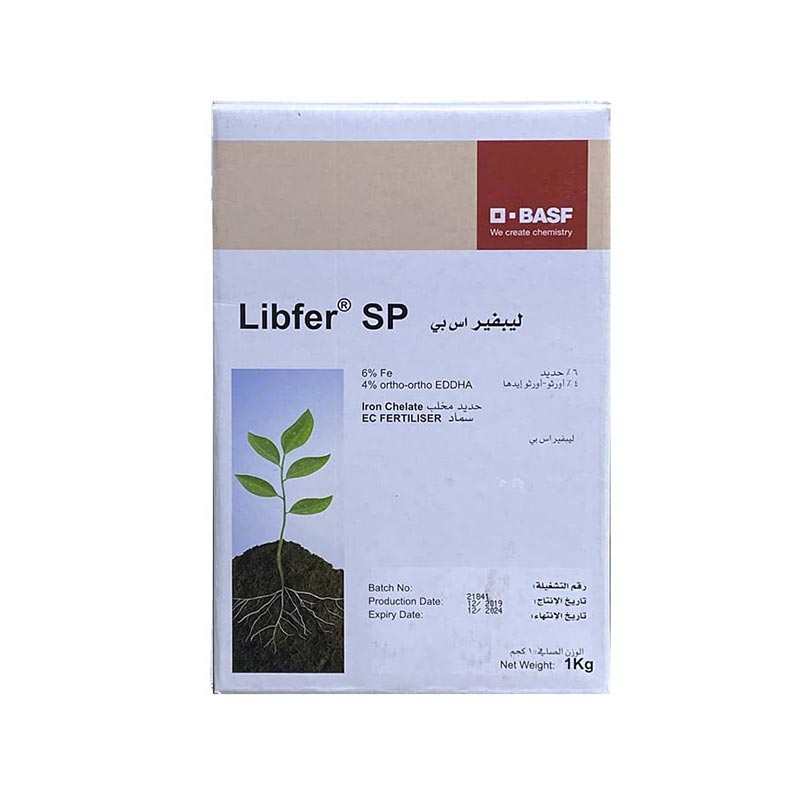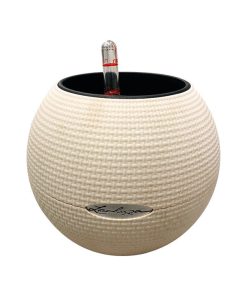Chelated Iron EDDHA Fertilizer-Ortho EDDHA Plantsworld.ae
د.إ 135,00 د.إ 54,00
|
 Crop |
Rate of Use |
|
Field Crops |
2-4 kg/ha |
|
Citrus: |
|
|
Young Trees |
25-30 gm/Tree |
|
Mature Trees |
45-55 gm/Tree |
|
Annual Maintenance |
35-45 gm/Tree |
|
Fruit Trees: |
|
|
Apples, Peaches, Pears, Apricot, Plums, Almond |
80-100 gm/Tree |
|
Mango, Banana, Guava |
|
|
Grapes |
750-1000 g/100 m in the Raw Divided into 5 Doses from Starting of Green Bud and then Each Two Weeks. |
|
Strawberry |
|
|
Raspberries |
|
|
Ornamental Plants: |
60 gm / 10 m2 |
|
Ornamental Shrubs: |
20-50 gm / Bush |
|
Vegetables: |
1.5 – 2 kg / ha |
|
Greenhouse Crops: |
75 – 100 g / Tunnel Weekly with Irrigation Water |
|
Foliar Application: |
600 – 800 g / 1000 Liters of Water |
 
Description:
This iron fertilizer is treasured with EDDHA chelate. And due to this chelate, the iron persistently remains stable and available, even in soils that have a low pH value. This iron chelate is one of the few chelates that could be effective in soils or substrates with a high and low pH values. It contains a large part of the biologically effective ortho-ortho isomer and has a content of about 4%. Because these microgranulate dissolve iron fertilizer completely and quickly, unlike other iron chelates where residue may remain, it does not clog with any residue that could block nozzles or other parts.
Iron is necessary for the production of chloroplasts and therefore has a very important role in the photosynthesis of a plant. The nutrient is also important for the growth development of the roots.
Application:
Use Libfer SP to receive an extra gift of iron. Because iron precipitates relatively very quickly, the use of a chelate is recommended  mainly for preventing any iron deficiency. This EDDHA iron chelate is well suited for use in soils or in substrates of a low pH values, but also for the ones with a high pH values too.
If its use is administered by irrigation, then it’s necessary that it must be rinsed with clean water.
Dosage:
Floriculture:
Preventive 1 to 3 grams per m2
Moderate deficiency 4 to 7 grams per m2
Severe deficiency 8 to 10 grams per m2
And In the case of roses, Fe-EDDHA could make it more difficult to absorb manganese. Watch out for chlorosis and, if felt necessary, spray manganese sulphate or chelate.
Cultivations on substrate:
465 gm 5 micromol FE/liters diluted nutrient solution
930 gm 10 micromol FE/liters diluted nutrient solution
1400 gm 15 micromol FE/liters diluted nutrient solution
The dosage mentioned above for crops, must be applied with a 100x concentrated solution in A-tanks of 1000 liters, while when to be utilized on substrate.
Fruit cultivation:
Field 3 to 4 grams per m2 (rinse directly)
Separate trees 5 to 8 grams m2 trees (rinse directly)
This product should be applied in fruit cultivation, through the roots in the period from mid-March to mid-June. The required amount should be applied immediately before or during the rain occurs. It is important to do the application in a moist soil or substrate.
| Size | 1 Kg |
|---|
Fast Shipping & Professional Packing
We are able offer many shipping options thanks to our long-term partnership with UPS FedEx DHL. Our warehouse staff is highly educated to pack your items exactly as per the specifications we offer. Your items will undergo an extensive inspection and will be securely secured prior to being delivered. We ship to thousands clients every day in a variety of countries. This shows our commitment to becoming the biggest retailer online in the world. The distribution centers and warehouses distribution are in Europe, as well as the USA.
Orders with more than one item are assigned processing times for each item.
We will thoroughly inspect all products before they are shipped. The majority of orders will be shipped within 48 hours. Delivery is expected to take between 3 and 7 days.
Returns
Stock is dynamic. It's not completely managed by us since we are involved with multiple parties such as the factory and the storage. So the actual stock may alter at any time. Please understand it may happen that your order will be out of stock once your order has been made.
Our policy is valid for 30 days. If you don't receive the product within the 30 days period, we're not able to issue the option of a refund or exchange.
The item cannot be used and in the original packaging. The item must be in its original packaging.
Related products
Pots and Accessories
Confidor Insecticide – Plant Care Growth Essential Plantsworld.ae
Pots and Accessories
Desert Energy Ammonium Sulphate Fertilizer, 25 Kg Plantsworld.ae
Pots and Accessories
Desert Energy Nutrients Combi (QTY – 1kg)- Plant Care Growth Essential Plantsworld.ae
Pots and Accessories
Desert Energy Lawn Glow 1 Liter – Fertilizer-Plant Care Growth Essential Plantsworld.ae
Pots and Accessories
Bioclean Microbial Organic Compound (Qty-500ml )- Plant Care Plantsworld.ae
Pots and Accessories
Desert Energy Npk Fertilizer 18-18-5+2Mgo+Te, 25 Kg Plantsworld.ae
Pots and Accessories
Pots and Accessories
Affet New Broad Spectrum Fungicide (Qty-250ml)- Plant Care Plantsworld.ae
Pots and Accessories
Beorol Jute Rope 2.5/2 (500 gm){thin} – Plant Care Plantsworld.ae
Pots and Accessories
Desert Energy N-P-K Fertilizer Tabs – Plant Care Growth Essential Plantsworld.ae
Pots and Accessories
BAYER Merit Turf – Insecticide for Lawn and Gardens | Made in France | Plantsworld.ae
Pots and Accessories
Pots and Accessories
Desert Energy ‚General Purpose‚ Powder Fertilizer – Plant Care Growth Essential Plantsworld.ae
Pots and Accessories
Pots and Accessories
Cosmocel H85 Humic Acid, 1 Kg Organic Hydrosoluble Powder Fertilizer- Plant Care Plantsworld.ae
Pots and Accessories
Blaukorn N-P-K Fertilizer 12-12-17 (+2+TE) – Plant Care Growth Essential Plantsworld.ae
Pots and Accessories
Desert EnergyNPK Fertilizer 12-12-17+2Mgo+Te, Fruit And Flower Fertilizer, 25 Kg Plantsworld.ae
Pots and Accessories
Desert Energy NPK (12-14-24+2Mgo+Te) Water Soluble Fertilizer Plantsworld.ae
Pots and Accessories
Best Green Blumenerde Universal Potting Soil – Plant Care Plantsworld.ae
Pots and Accessories
Pots and Accessories
Disper Cab Sinergy Organic Correction & Prevention For Calcium and Boron Deficiencies Plantsworld.ae
Pots and Accessories
Pots and Accessories
Basafer Plus Iron Chelate Powder Fertilizer – Plant Care Growth Essential Plantsworld.ae
Pots and Accessories
Desert Energy Magnesium Sulphate, Water Soluble Fertilizer, 25 Kg Plantsworld.ae
Pots and Accessories
Pots and Accessories
Desert Energy N-P-K Fertilizer Tabs (QTY – 1kg)- Plant Care Plantsworld.ae
Pots and Accessories
Desert Energy Fast Green Powder Fertilizer – Plant Care Growth Essential Plantsworld.ae
Pots and Accessories
Pots and Accessories
Desert Energy Fruit & Flower Powder Fertilizer – Plant Care Growth Essential Plantsworld.ae
Pots and Accessories
Desert Energy Ironganese Liquid Fertilizer, 500 Ml Plantsworld.ae
Pots and Accessories
Beorol Jute Rope – 0.4/2 (200 gm) – Plant Care Plantsworld.ae
Pots and Accessories
Disper Cab Sinergy (Qty-1kg) – Plant Care Growth Essential Plantsworld.ae




































